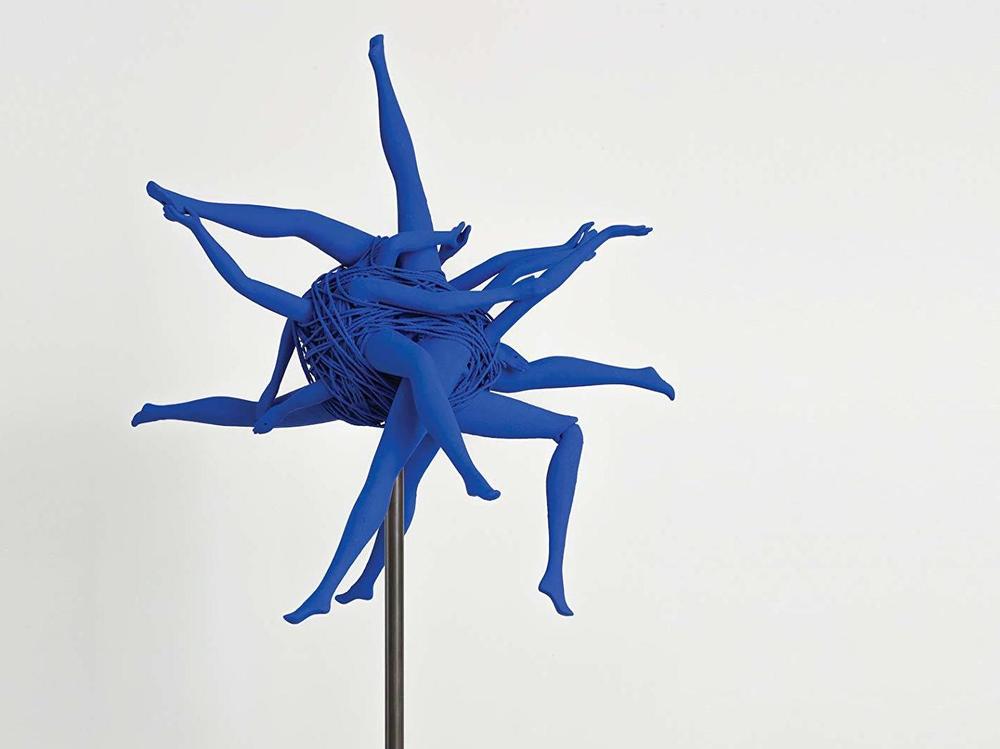Section Branding
Header Content
'Arrow' Creates Beauty From What Hurts Us Most
Primary Content
An arrow at once symbolizes love, as fired from Cupid's bow, and death, as a weapon. It carries passion and direction, both as a way of providing service and demanding attention. In Sumita Chakraborty's debut collection of poems, the arrow adapts to each of its forms by striking the subconscious and giving birth to a new universe.
As an epic collection of fables, songs, and dreams, Arrow is a book that creates magic out of what hurts us most. Death, grief, and violence permeate its pages. But Chakraborty flows through this pain with expert lyricism to shine light on life's marvels.
Perhaps the most obvious star of the collection is the poem "Dear, Beloved." Like some others in the book, this poem is long, spanning 11 pages. But it is also large, layered with stories of planets, children, myths, and nature, all existing in coinciding realms. And at its heart, the poem — and the book — considers the death of Chakraborty's sister.
Chakraborty's sister Priya died in 2014; "Dear, Beloved" is a translation of her name. "Sister it was always true / that I would outlive you," she writes. Guilt seeps in through the use of contrasting images: The sister wants to sing and dance on a warm island; the poet wants rocks and the cold top of a mountain. But perhaps they meet in the middle, somewhere in "the dull twilight of early morning." In this way, the guilt, or "one of the curses of living" is also what pushes the poet herself to "sing and dance, breathing heavily."
The poem is also an emblem of a kind of involuntary resilience. "My sister did not live long enough to see the moon / turn red, but I did, and despite those who wish otherwise, / myself included, I will see it again," the poet writes. Life keeps on going despite grief, despite more pain. "I did not want to die, but I wanted to want death," Chakraborty writes. So she "practices" death, hoping to find her sister. But even ghosts are "filled to the brim ... with flowers," and their "scents describe the places they were born." It is as though we exist at the tip of life's arrow, entangled in our own terrors, but we cannot stop that arrow, nor control where it is going.
One way in which Chakraborty attempts to solve this large cosmic problem — where are we going? — is to play with etymologies. She takes words and breaks them down, then apart, assigning them to other things; she places them inside mathematical word equations that compel us to really focus on life's puzzle.
For instance, the word sadness has many definitions: "my body, / it invents definitions for the word sadness, like noun, the feathers on a bird's back." Here, the sadness is quite useless. It is also, "noun, a chorus of brass instruments," and "verb, to shake like chimes flanking a rock-hewn shore." Here it is alive, but just for a moment. Then, it is "conjunction, bees, forests of them, devotional and thick enough to knot together human dreams." Here the sadness is so powerful in its abundance that it seems endless. Altogether, by leaving these puzzle pieces for us throughout the poem, Chakraborty helps us understand how pain gets tangled as it ages.
In one of her many short poems — all of which are titled "O Spirit" — she writes, "I think of new words for solace, one of which is knifed. // We take no form until licked into shape by the tongues of those who love us." This is a powerful moment in the reader's understanding of pain — both in terms of receiving and inflicting it. The pain may not tell us where we are going, but it is crucial for pointing out who we are.
Still, some things cannot be defined. In another "O Spirit" poem, Chakraborty says, "I have not been able to build the etymology of love. // The word, in its weight, is an eclipse." The eclipse here is a darkness so full in itself, it urges us to consider the inherent oppressiveness of beauty.
And there is always a reminder that pain and beauty co-exist. One of the earlier poems in the book is titled, "Most Of The Children Who Lived In This House Are Dead. As A Child I Lived Here. The window that "looked out at the blue pansies" is beautiful, but the flowers are "also sometimes purple, or yellow, like the world contusion."
It is through this correlation of pain and beauty that Chakraborty examines death. At one point she talks directly to the reader, lending explanation as to why she is speaking in fable: The fable, she says, is a way to relate to the reader's night terrors, while at the same time protecting herself from them.
Ultimately, it is that middle realm — the world between the real and not real — that makes room for what is too painful, and thus cannot be swiftly realized. Chakraborty's lyrics open up the subconscious for us so we can gather our entanglements and keep on shooting through the universe.
Jeevika Verma is a producer at Morning Edition.
Copyright 2020 NPR. To see more, visit https://www.npr.org.

